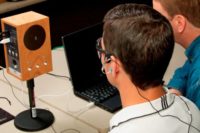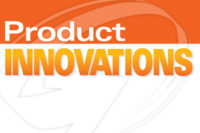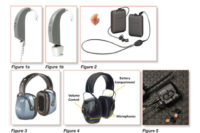The best fit: Protecting hearing through comfortable earplugs

Americans are losing their hearing. According to the Centers for Disease Control and Prevention, one in four adults suffers from some hearing loss.1 The vast majority didn't know they had reduced hearing until they were tested.2
Roughly 50 million Americans3 reported working in a “very loud” environment in a 2014 survey.4 Companies spend an estimated $242 million on workers’ compensation every year, according to the Department of Labor.5,6
Part of the problem is that people who wear earplugs at work may not be getting the full protection they need. That's because they're not wearing earplugs properly – through no fault of their own. Most earplugs employ a one-size-fits-all approach. Yet ears vary widely from person to person. By some estimates, one in four people struggle with earbuds.7
“Everyone's ear canal is as unique as your fingerprints,” notes Brian Fligor, a chief audiologist for the 3-D ear-scanning firm Lantos Technologies, “and even within one person your ear canals are not symmetric.”7
Ears are so unique to an individual that scientists have begun employing ear-recognition technology. One such algorithm, called "image ray transform," can identify a person through a picture of their ear 99.6 percent of the time – even when the picture is fuzzy.8 In other words, ears could become a new form of identification.
Customization
To find the right fit, users must ensure the earplug perfectly matches the shape of the ear canal. The gold standard is an earplug that can be made to fit 100-percent of its users – not just a few. The answer: customization. By being able to form an earplug precisely to your unique ear, you can find an earplug that rests comfortably in the ear.
It's important to protect hearing in a way that makes sense financially and with comfort.
Sources
- https://www.cdc.gov/media/releases/2017/p0207-hearing-loss.html
- https://www.washingtonpost.com/news/to-your-health/wp/2017/02/07/a-quarter-of-adults-in-the-u-s-have-hearing-loss-because-of-noise/?utm_term=.fe252eb479cd
- https://www.reuters.com/article/us-health-noise-usa-hearing/millions-of-americans-risk-hearing-loss-from-jobs-and-guns-idUSKBN17F2P9
- http://onlinelibrary.wiley.com/doi/10.1002/lary.26540/full
- https://www.usatoday.com/story/news/2016/09/01/kaiser-shhh-americas-most-common-workplace-injury-hearing-loss/89734914/
- https://www.osha.gov/SLTC/noisehearingconservation/
- http://www.slate.com/articles/technology/technology/2014/07/earbuds_that_won_t_fall_out_testing_earhero_yurbuds_stayhear_tips_and_more.html
- https://www.wired.com/2010/11/ears-biometric-identification/
Looking for a reprint of this article?
From high-res PDFs to custom plaques, order your copy today!





